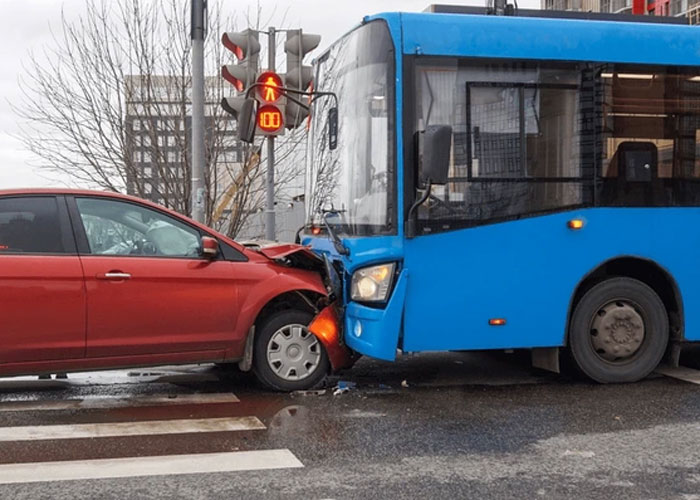Using Telematics Data to Prove Driver Behavior
In 2025, technology is everywhere, even in our cars. Many modern vehicles come equipped with “telematics” systems. You might be wondering what telematics is and how it can be used. This article will explain what telematics is, and how telematics data can be used to help prove driver behavior in car accidents.
What is Telematics?
Telematics is a combination of “telecommunications” and “informatics.” Simply put, it’s a way of collecting and sending information about a vehicle’s operation. Think of it as a high-tech black box recorder, similar to what airplanes use, but for cars, trucks, and other vehicles. This system gathers a wide range of data, including:
- Speed: How fast the vehicle was traveling.
- Acceleration: How quickly the driver sped up.
- Braking: How hard the driver applied the brakes.
- Steering: Sharp turns or swerving motions.
- Location: The vehicle’s precise location via GPS.
- Time of Day: When the events occurred.
- Impact: Whether a collision occurred.
- Seatbelt Use: In some systems, whether seatbelts were fastened.
- Cellphone Use. Whether the driver was using their cell phone while driving.
How Telematics Works
Telematics systems use a combination of technologies:
- GPS (Global Positioning System): This pinpoints the vehicle’s location.
- Sensors: These are built into the car and measure things like speed, braking, and acceleration.
- Onboard Diagnostics (OBD): This port, usually found under the dashboard, provides access to the car’s computer system.
- Cellular or Satellite Communication: This sends the data to a central server.
Telematics and Car Accidents: Proving What Happened
In a car accident, figuring out exactly what happened can be difficult. Witnesses might have different accounts, and memories can be unreliable. Telematics data provides objective evidence that can help reconstruct the events leading up to a crash. This is extremely valuable in personal injury cases.
How Telematics Data is Used in Legal Cases
- Challenging Witness Testimony: If a witness claims a driver was going slowly, but the telematics data shows they were speeding, it casts doubt on the witness’s statement.
- Determining Fault: In many accidents, it’s not immediately clear who was at fault. Telematics can help determine which driver was behaving recklessly.
- Supporting Your Claim: If you’ve been injured in an accident and the other driver was at fault, telematics data can be strong evidence to support your claim for compensation.
- Insurance Claims: Insurance companies use telematics data to investigate claims. It can help them determine liability and assess the damage.
The “Black Box” and Event Data Recorders (EDRs)
You might hear the term “black box” used in relation to car accidents. This usually refers to the Event Data Recorder (EDR). The EDR is a specific part of the telematics system that focuses on recording data related to a crash.
Accessing Telematics Data
Getting access to telematics data isn’t always straightforward. Here’s why:
- Privacy Concerns: The data belongs to the vehicle owner.
- Legal Process: To obtain the data, you usually need a court order (subpoena). An attorney can help with this.
- Data Format: The raw data can be complex and require expert analysis.
Expert Witnesses
Because telematics data can be technical, lawyers often work with expert witnesses. These experts can:
- Interpret the Data: Explain what the data means in plain language.
- Reconstruct the Accident: Create a visual representation of how the accident happened.
- Testify in Court: Present their findings to a judge or jury.
Telematics and Usage-Based Insurance (UBI)
Some insurance companies offer discounts for drivers who agree to have their driving monitored through telematics. This is called Usage-Based Insurance (UBI). The idea is that safer drivers get lower premiums. However, it’s important to understand that this data could also be used against you in the event of an accident.
The Future of Telematics
Telematics technology is constantly evolving. Future systems may include:
- Video Recording: Dashcams integrated with telematics.
- Driver Monitoring: Systems that detect drowsiness or distraction.
- Autonomous Driving: Telematics plays a key role in self-driving cars.
Contact The Brown Firm Today
If you’ve been involved in a car accident in Georgia or South Carolina, and you believe the other driver was at fault, telematics data could be crucial to your case. The Brown Firm has experience in handling personal injury cases involving telematics. We understand the technology and how to use it to protect your rights. Contact us today to discuss your situation.
Visit our offices at:
- 7176 Hodgson Memorial Drive, Savannah, GA 31405
- 320 East Clayton Street, Athens, GA 30601
- 197 14th St. NW, Suite 200, Atlanta, GA 30318
- 110 Traders Cross #226, Okatie, SC 29909
Or call now for a free consultation on (800) 529-1441.
Ready to Talk to a Lawyer Who Has Your Back?
Contact The Brown Firm
Get the Answers and Compensation You Deserve
You’ll notice the difference when you contact The Brown Firm! Our local dedicated attorneys want to help you recover and rebuild.
Schedule your free consultation by calling (800) 529-1441 or completing our simple online form.




